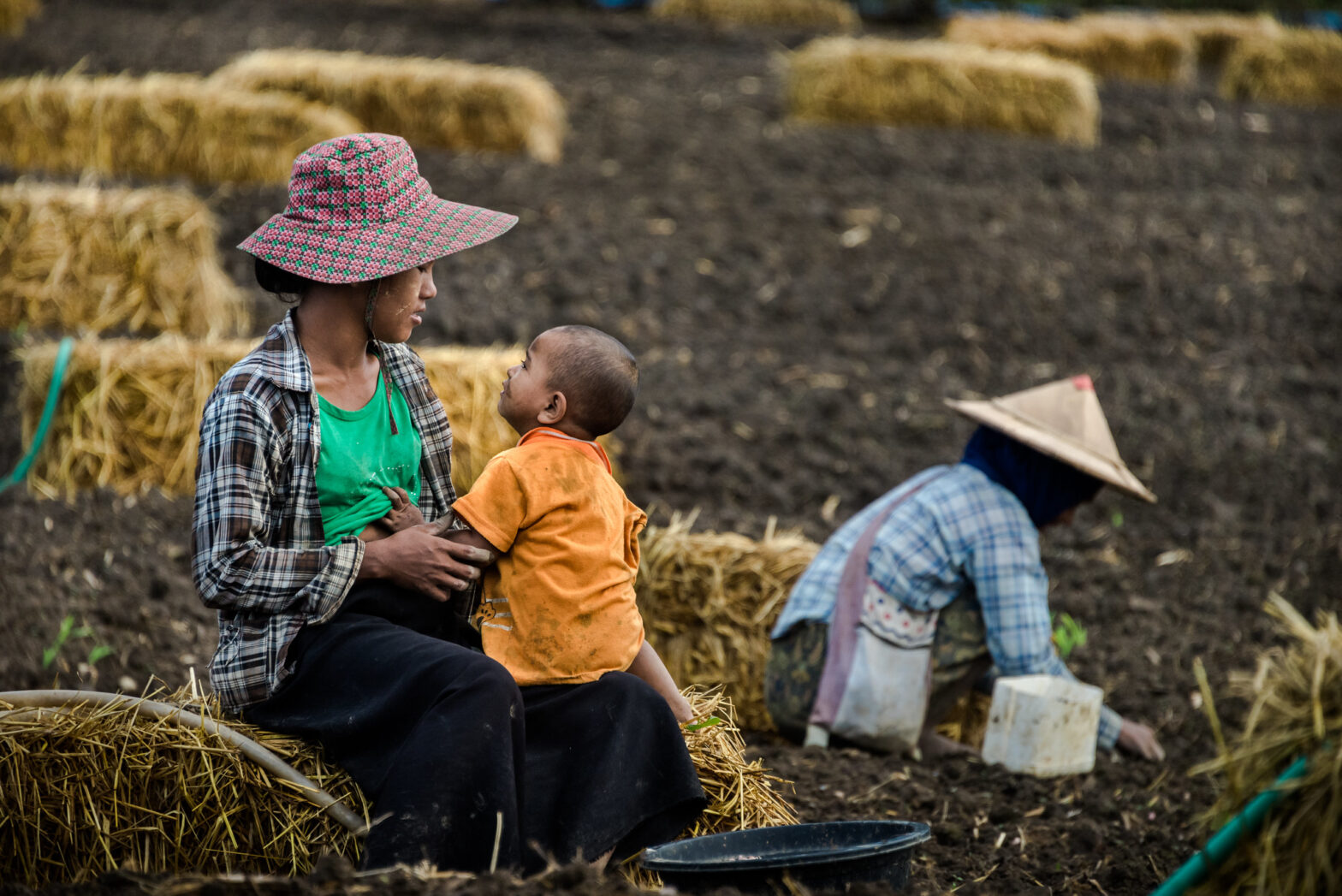New global data covering 189 countries and territories expose the motherhood penalty faced by millions of women around the world in the midst of the COVID-19 pandemic. Just released as part of a collaboration between UN Women and ILO, the analysis focuses on mothers and fathers (women and men aged 25 to 54 with partners and at least one child under the age of 6 at home) that actively participate in the labour market. Persons living in other household types, including lone parents, are equally relevant – and they too are feeling the pandemic squeeze – but 2020 estimates are not yet available for them in many countries.
Even before the pandemic, labour force participation for mothers (55% for women aged 25-54 with partners and at least one child under the age of 6 at home) was lagging behind women’s overall participation rate (62.1%) and was substantially lower than that of fathers (97.1%). The working fathers, in fact, enjoy a labour market premium – they are more likely to participate in the workforce than all men in the same age group (whose participation rate is 93.5%).
The data confirm that the unequal division of care and domestic responsibilities inside the home is a strong driver of inequalities in labour market participation. The effect is also felt in other ways, including women’s access to social protection and equal pay, growth in wages and immediate and long-term opportunities for management and leadership positions, exposure to the risk of violence and harassment.
In 2020, the pressures of juggling work and family, coupled with school closures and job losses in female-dominated sectors meant even fewer women were participating in the workforce. About 113 million women aged 25–54, with partners and small children, were out of the workforce in 2020. This figure is astonishing, particularly when compared to their male peers (13 million of whom were out of the workforce – up from 8 million before COVID-19.
It also speaks to a dramatic reversal induced by the pandemic of what had previously been a slow but steady upward trend in labour market participation rates of women with partners and small children.
Men have also been impacted by the economic fallout of the pandemic, but relative declines have been larger for women. The number of mothers of small children who participated in the labour force decreased by 1.8% in 2020 relative to 2019, nearly twice the figure observed among fathers (1.0%).
The decline in women’s participation rates is observed across regions, irrespective of pre-pandemic levels. Latin America and the Caribbean in particular saw a precipitous fall, from 56.4% in 2019 to 51.5% in 2020 (a 4.9 percentage-point decrease compared to 2.7 percentage points for men).
The public health situation in 2020, as well as policy responses, resulted in markedly different labour market disruptions across regions. Additionally, access to flexible work arrangements, such as work-from-home, along with other care policies including extended family leave for parents, sick leave and childcare services for frontline workers, may explain why working moms fared better in some regions compared to others.
Moreover, for many women, care pressures forced them to leave the workforce altogether, or to reduce their working hours, while others switched jobs in favour of work offering more flexibility and shorter commutes. These shifts may have severe consequences for women’s short-term and long-term income security, but it’s too early to know. The true impact of the pandemic on women and the world of work therefore may not be felt for many years to come.
In 2022, women continue to face the same pressures as in 2020. New and more contagious strains of the virus are causing schools and related care, nutrition and health services, to frequently close or remain inaccessible and women are again feeling the squeeze. These multiple pressures are also having a massive impact on women’s mental health. Based on data from Rapid Gender Assessments by UN Women, in 22 out of 33 countries surveyed, women were more likely than men to report that their mental or emotional well-being had been impaired. And women who reported increased unpaid care and domestic work were 1.6 times as likely to report increased mental and emotional stress as women who did not see increases in such work.
The COVID-19 pandemic has highlighted the importance of comprehensive government policies and business practices, including investing in transformative care policy packages that support women and all caregivers in the workforce. The recovery process must focus on the following measures:
- Family-friendly working arrangements for both parents, including telework, flexible start and finish times, time-banking and the ability to work compressed work weeks
- Access to affordable and quality childcare, education and school meal services, with good quality care jobs
- More inclusive and adequate paid leave provisions, including parental, sick, emergency and long-term care leaves
- Promoting work environments free from violence and harassment
- Preventing and addressing discrimination based on motherhood, including by removing legal barriers for women entering, remaining and progressing in the workforce
- Promoting women’s participation in managerial and leadership positions
- Introducing labour laws/reforms that promote decent work for all.
Women urgently needed these policies before the pandemic. Building back better means taking action to deliver these transformative policies for women and all caregivers now.
